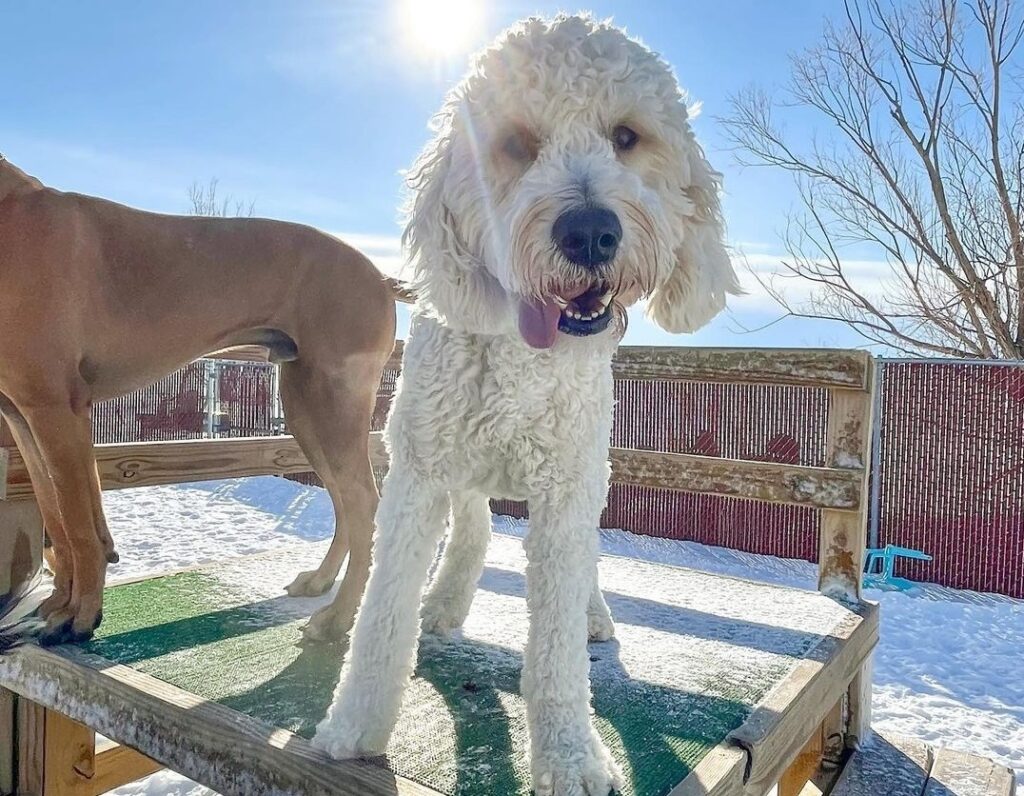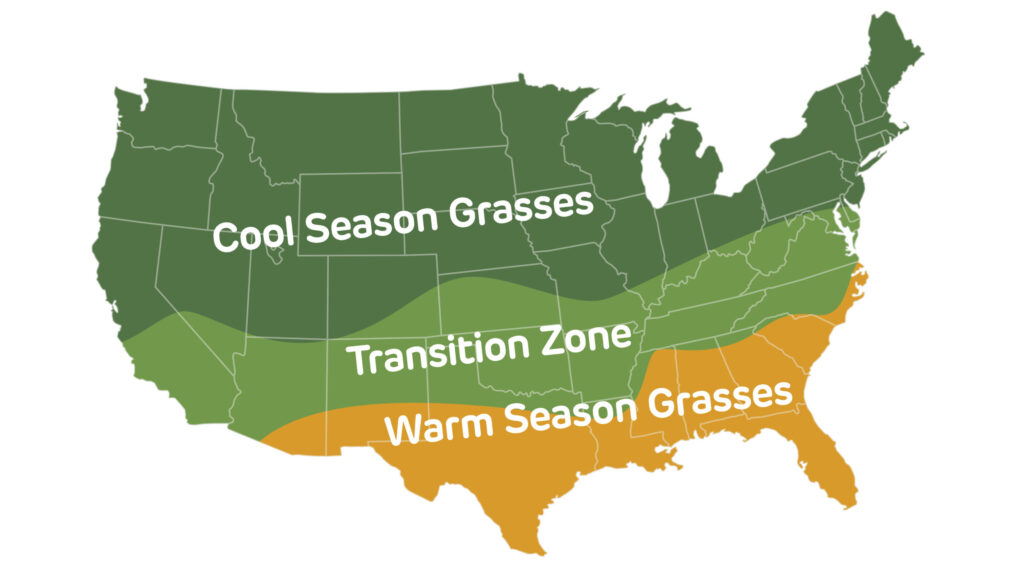
Image courtesy of Smoken Dakota Kennels, one of our brand ambassadors. Learn more about our Ambassador Program here.
A good dog yard or dog park will adapt with the seasons to be the best it can be throughout the year. Part of this change occurs naturally, such as when grass goes dormant for the winter, shedding its water content and conveniently providing an insulating layer between paws (or bellies) and the ground. However, no natural yard is completely self-sufficient throughout the entire year.
We’ll explore some of the best practices to prepare your grass dog yard for winter. Whether you’re a one man show or you have a crew to help with the work, these tips will help you get the most out of your investment in your yard, and you’ll make some dogs very happy along the way!
Aerating a grass yard helps alleviate and prevent soil compaction so water, air, and roots can move freely through the soil and generally do their thing. This is particularly important in preparation for cold and wet weather as you want grass to be at its strongest before it’s put to the test.
Mechanical aerators are commonly used in a variety of applications. You’ve likely seen a sports field or yard pocked with holes with cigar-shaped cores scattered all over. That’s the telltale evidence of a mechanized aerator. These are available to rent at most of the larger home improvement and gardening stores.
There are other options should you choose to avoid the mechanical aerator for any reason, such as cost, availability, or avoiding your dog yard being covered by those ugly pellets. One alternative that’s generally not worth pursuing is manual aerators, whether it’s spikes attached to your feet or placed at the end of a handle, these solutions are a lot of work and the efficacy is dubious at best.
Alternatively, liquid aeration is an interesting solution. These products generally use enzymes to eat through organic material in the soil to create air pockets. As one would expect, the results aren’t quite as dramatic as mechanical aeration, but if you’re averse to mechanical aeration, it’s your best bet. These products are usually safe for animals and people but it’s important to check your products to determine if they’re safe and keep them out of reach from children and pets.

When you prepare your grass dog yard for winter, it’s important to consider what kind of grass you have in your yard. Cold season grasses like Kentucky Bluegrass, Perennial ryegrass, and fescue benefit from fall or early winter fertilizing. If you don’t know what kind of grass is in your yard, talk to your landscaper or, at the very least, refer to this map for approximate grass types in your area. If you have warm-season grass, you can skip fertilizing until the end of winter.
For cold-season grasses, fertilizing in the fall or early winter will help strengthen roots so the grass has a better chance of, well, springing back when spring comes around.
You can save yourself or your crew a significant headache if you weed around the winter time. If left unchecked, just a few weeds in a yard will multiply come spring. Some weeds are harmful to dogs, so getting rid of them before spring will reduce the likelihood of pets getting hurt.
In the cold weather, extra care must be taken to keep dogs safe and healthy. Many dog owners find the winter to be a difficult time because their dogs get restless, but oftentimes it’s unsafe or inconvenient to take them outside.
Whether you’re working on an apartment dog park, a dog yard at a daycare, or a home lawn, dogs will appreciate a shelter in the cold weather. An ideal dog house is raised from the ground, has walls to protect from wind, and a roof to stay dry. If you’re hesitant to spend the money on a shelter because it’s a seasonal amenity, bear in mind that shelters offer valuable shade in warmer weather as well. Just about every dog yard could benefit from dog houses or similar structures, and such safe havens could be the very reason dog owners come back year after year.
It’s a simple fact: cold weather and winter precipitation make ‘outside’ work more difficult and hazardous. Before the weather becomes inhospitable, now is a good time to take a walk around your dog yard and make sure all of its amenities and structures are in working order. For example, fixing a fence in the fall is usually a whole lot easier than fixing it in the winter. Gutters are another fix-it-up hotspot in the yard. Broken gutters above a dog yard can dump water in a concentrated area, robbing you of useable yard space.
It’s not just carpentry or roofing that should be addressed during this time; now is a good time to overseed your yard to strengthen it for the winter. Be sure to focus seeding on the sparse or bare areas in your yard to bring them back to life.
Just because grass will soon go dormant doesn’t mean you can slack off when it comes to mowing. Mowing before first freeze will help avoid debris getting caught in your yard and fend off diseases such as snow mold, a fungal affliction that affects cold-season grass yards if a heavy blanket of snow falls on the yard before the ground has fully frozen.
Being proactive in this manner can save you when spring comes. For example, as there are no effective fungicide treatments for yards affected by snow mold, it’s a problem that will stick around and make your yard less attractive for precious weeks in the spring. Spring is when your yard should look its best!
You’ve invested time and money in your yard so dog lovers will have a safe place for their pups—but a season’s worth of neglect can throw much of that time and money out the window. Take the time to prepare your grass dog yard for winter, before problems arise. When you mow the yard short or overseed in preparation for the winter, think of it like an investment, too. Thinking ahead to winter now will save you time, money, and headache in the future.
Subscribe
to our newsletter
Recent Posts
Contact us:
2381 Centerline Industrial Drive
St. Louis, MO 63146
Quick Links
© 2024 GrassWorx, LLC. All Rights Reserved. Natura™ is a trademark of GrassWorx, LLC. St. Louis, MO 63146.